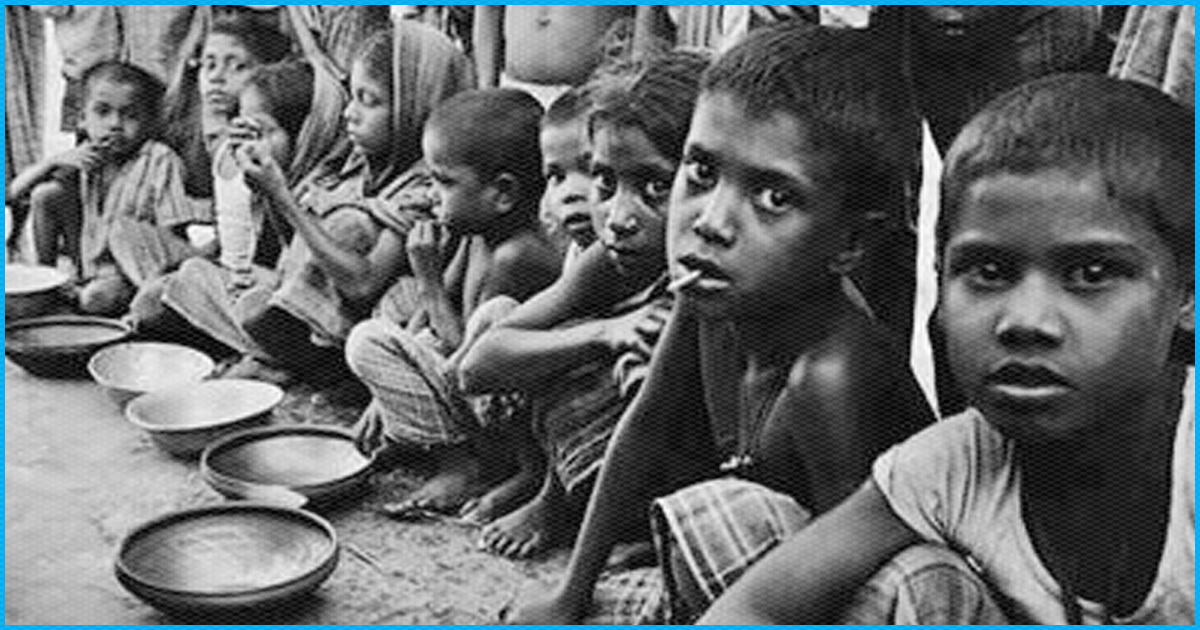
India Ranks 103rd Among 119 Countries In Global Hunger Index, Even Below Bangladesh & Ethiopia
12 Oct 2018 8:46 AM GMT
Even as the world looks forward to achieving the Sustainable Development Goal (SDG) 2, which aims to end hunger, ensure food security and improve nutrition by 2030, a newly released report suggests that this might prove to be a Herculean task. The Global Hunger Index (GHI) for 2018 indicates that even as the level of hunger and undernutrition globally has fallen from 29.2% in 2000 to 20.9%, they continue to be in the serious category.
What is Global Hunger Index
The Global Hunger Index report released on October 11 is the thirteenth edition. Welthungerlife and Concern Worldwide has been issuing reports on hunger levels in the world since 2006. The main area of focus for this year’s report has been “Forced Migration and Hunger”.
GHI prepares the ranking on the basis of four indicators; undernourishment is the first indicator., the other three indicators use data for children below the age of five, that is child wasting, child stunting and child mortality. The South Asian region has the worst GHI score for this year, which stands at 30.5. It is closely followed by Africa South of the Sahara at 29.4%.

Of the 119 countries surveyed, India ranks at a dismal 103 with GHI score being 31.1. There is a slight improvement from 2010’s score of 32.2. To give a context on how bad the situation is for India, it may be noted that the best-performing nations have a score of less than 5.

21% of children in India are under-weight
It may be noted that South Asia’s child wasting rate has been termed to be critical. Child wasting refers to children having an extremely low weight for their height, which points to acute under-nutrition. India has the highest level of child wasting at 21%. As reported by The Hindu, India performs better than only war-torn Sudan in this aspect. Reportedly, this was worse than the previous years. It was 17.1% in 2000, which has now increased to 21% in 18 years.
A silver lining may be the fact that in terms of other parameters, India’s situation seems to have improved. The percentage of undernourished has dropped from 18.2% in 2000 to 14.8% in 2018. The child stunting (low height for age) has dropped from 54.2% in 2000 to 38.4% in 2018. The child mortality has reduced from 9.2% to 4.3% for the same period.
The Logical Indian take
According to the World Bank’s 2016 data, 1 in every 5 Indians is poor, and the 7 poorest states – Uttar Pradesh, Bihar, Madhya Pradesh, Odisha, Jharkhand, Rajasthan and Chhattisgarh – house 62% of the country’s poor. Unemployment in these regions is high, hence, the lack of funds to sustain life. While in our urban bubbles, we hardly realise the plight of more than half of our country’s population.
Food security in India is clearly alarming. Defined by the World Health Organisation (WHO) as a “situation when all people at all times have physical and economic access to sufficient and nutritious food that meets their dietary needs and food preferences for an active and healthy life”, India’s 2018 GHI ranking points at a situation fraught with despair.
The country is one of the largest grain producers in the world, despite which, more than 20% of the 1.3 population goes to bed hungry and farmers across the nation are protesting against their growing debt and rising suicide rate.
India also struggles to protect itself from natural disasters that continue to burden its food security. Precautionary measures are inept; take the example of floods that happen across the country every year, eroding cultivable land and destroying crops.
Also Read: India Slips 3 Ranks To 100 Among 119 Countries In 2017 Global Hunger Index; Behind Bangladesh, Nepal
 All section
All section













